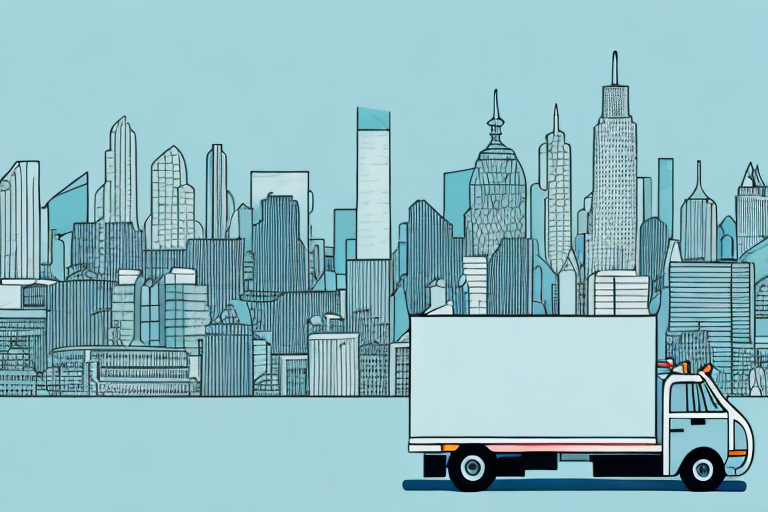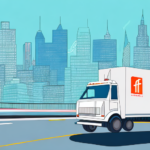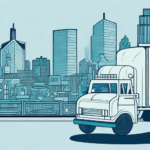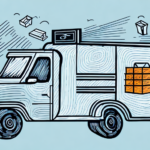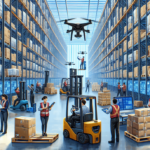Exploring the Last Mile Delivery Market: Trends and Opportunities
Last mile delivery refers to the transportation of goods from a warehouse or distribution center to the final destination or customer's residence. The market for last mile delivery has experienced significant growth over the past few years, driven by the rapid expansion of the e-commerce industry. According to a report by Statista, the global last mile delivery market was valued at approximately $40 billion in 2022 and is projected to reach $80 billion by 2027, growing at a compound annual growth rate (CAGR) of 14%. This article explores the latest trends and opportunities in the last mile delivery market, including the importance of efficient delivery, the rise of same-day and next-day delivery services, the impact of technology, challenges faced by service providers, sustainable practices, urbanization influences, innovations in delivery methods, customer experience enhancements, and the significance of collaboration among stakeholders.
The Importance of Last Mile Delivery in Today's E-commerce Landscape
Last mile delivery is critical in the e-commerce industry as it directly influences customer satisfaction and overall shopping experience. According to a survey by PwC, 73% of consumers consider timely delivery as a key factor influencing their purchasing decisions. A positive customer experience fosters brand loyalty and repeat business, while a negative experience can lead to lost sales and damage to the brand's reputation.
However, last mile delivery presents several challenges, primarily the high cost associated with it. The delivery process often involves multiple stops, which can be time-consuming and resource-intensive. In 2022, last mile delivery accounted for up to 53% of the total shipping costs, as reported by Boston Consulting Group. To address this challenge, companies are exploring innovative solutions such as drones and autonomous vehicles. These technologies have the potential to reduce delivery times and costs while enhancing the overall customer experience. Nevertheless, regulatory and logistical hurdles remain before these solutions can be widely adopted.
The Rise of Same-Day and Next-Day Delivery Services
The rise of same-day and next-day delivery services has transformed the landscape of last mile delivery. These services offer customers rapid delivery of their products, providing companies with a competitive edge. Traditional shipping methods, which range from two to five days, no longer meet the expectations of consumers who desire swift delivery. According to Business Insider, same-day delivery services have seen a 30% increase in demand over the past year.
Same-day and next-day delivery services are particularly advantageous for industries dealing with perishable goods, medical supplies, and other essential items that require immediate transportation. Furthermore, the surge in demand for these expedited services has spurred advancements in logistics and transportation systems. Companies are investing in technologies such as real-time tracking and automated delivery systems to ensure timely and efficient deliveries. As the demand for rapid delivery services continues to grow, further technological innovations are expected to enhance both business operations and consumer satisfaction.
How Technology is Revolutionizing Last Mile Delivery
Advancements in technology have led to innovative solutions in the last mile delivery market. For instance, GPS tracking systems enable companies to monitor their vehicles' movements in real-time, while route optimization software helps identify the most efficient routes to minimize delivery times and fuel costs. According to Forbes, route optimization can reduce delivery times by up to 20%, significantly enhancing operational efficiency.
Automated vehicles, including drones and delivery robots, are increasingly being utilized to deliver packages directly to customers' homes. These technologies not only reduce delivery costs but also increase efficiency and decrease road congestion. Additionally, the implementation of smart lockers in convenient locations such as shopping centers and train stations allows customers to retrieve their packages at their convenience, thereby reducing the need for multiple delivery attempts and minimizing the risk of package theft.
Artificial Intelligence (AI) is also playing a pivotal role in revolutionizing last mile delivery. AI-powered chatbots provide customers with real-time updates on their delivery status and handle inquiries, improving the overall customer experience. Furthermore, AI algorithms are being used to predict delivery times more accurately, reducing the likelihood of missed deliveries and enhancing customer satisfaction.
Challenges Faced by Last Mile Delivery Service Providers
Last mile delivery service providers encounter various challenges that they must overcome to thrive in the market. One significant challenge is urbanization, which often leads to increased traffic congestion and reduced parking space in cities. This makes it difficult for delivery vehicles to navigate efficiently, resulting in longer delivery times and higher operational costs. To mitigate these issues, companies are adopting innovative solutions such as electric bikes and micro-fulfillment centers located closer to urban areas.
Another major challenge is the high cost of last mile delivery, especially for companies offering same-day or next-day services. To maintain profitability, these companies must find ways to reduce expenses without compromising service quality. Strategies such as route optimization, bulk ordering of shipments, and the use of technology-driven solutions are being employed to address this issue.
Additionally, the high rate of failed deliveries poses a significant problem. Failed deliveries occur when recipients are unavailable to receive packages or when incorrect addresses are provided, leading to additional delivery attempts and increased costs. Investing in technologies like GPS tracking and automated delivery notifications can help ensure that recipients are available to receive their packages, thereby reducing the occurrence of failed deliveries.
Meeting evolving customer expectations is another challenge. With the rise of e-commerce, consumers demand faster, more reliable delivery services. This puts pressure on companies to offer expedited delivery options without incurring prohibitive costs. Exploring alternative delivery methods, such as drones and autonomous vehicles, can help companies meet these expectations while managing costs effectively.
Sustainable Practices in Last Mile Delivery: A Growing Concern
Sustainability has become a critical concern in the last mile delivery market as consumers and businesses alike strive to minimize their environmental impact. Companies are encouraged to adopt sustainable practices to reduce their carbon footprint and promote environmental responsibility. One effective strategy is the use of electric vehicles (EVs) for deliveries. According to International Energy Agency (IEA), the adoption of EVs in last mile delivery can reduce greenhouse gas emissions by up to 50% compared to traditional fuel-powered vehicles.
Optimizing delivery routes through the use of advanced algorithms and data analytics is another sustainable practice that companies are implementing. By planning the most efficient routes, companies can minimize the distance traveled and the amount of fuel consumed, leading to both environmental and cost benefits. A study by McKinsey & Company found that route optimization can lead to a 10-15% reduction in fuel consumption.
Exploring alternative delivery methods, such as bike couriers or drones, is also gaining traction, especially in densely populated urban areas. Bike couriers offer an environmentally friendly and flexible delivery option, while drones can deliver packages quickly and efficiently without contributing to road traffic congestion. These methods not only reduce carbon emissions but also enhance delivery speed and efficiency.
Urbanization and its Impact on the Last Mile Delivery Market
Urbanization significantly impacts the last mile delivery market, as the migration of populations into cities increases the demand for efficient delivery services. With more people living in urban areas, the volume of deliveries has surged, leading to higher operational pressures on delivery service providers. According to United Nations, by 2030, approximately 60% of the world's population is expected to live in urban areas, intensifying the demand for last mile delivery solutions.
The increased demand in urban settings also brings challenges such as limited parking space, higher traffic congestion, and regulatory restrictions on delivery vehicles. To navigate these challenges, companies are investing in micro-fulfillment centers strategically located within or near urban areas, allowing for quicker and more efficient deliveries. Additionally, the use of electric bikes and small delivery vans helps in maneuvering through congested city streets while adhering to environmental regulations.
The rise of e-commerce has further fueled the growth of last mile delivery in urban areas. Consumers expect fast and reliable delivery services, prompting companies to innovate and enhance their delivery infrastructure. This has led to the emergence of new players in the market, such as crowdsourced delivery services and autonomous delivery robots, which offer flexible and scalable solutions to meet the increasing demand.
Innovations in Last Mile Delivery: Drones, Robots, and Autonomous Vehicles
Innovative technologies like drones, robots, and autonomous vehicles are revolutionizing the last mile delivery landscape. Drones offer the ability to deliver small packages quickly and efficiently, especially in areas with challenging terrain or limited infrastructure. According to a report by McKinsey & Company, drone deliveries can reduce delivery times by up to 60% compared to traditional methods.
Delivery robots are another significant innovation, capable of navigating sidewalks and delivering packages directly to customers' doorsteps. These robots enhance delivery efficiency and reduce reliance on human drivers, thereby lowering operational costs. Companies like Starship Technologies and KiwiBot are at the forefront of deploying delivery robots in various urban settings.
Autonomous vehicles hold the potential to transform last mile delivery by eliminating the need for human drivers and optimizing delivery routes in real-time. These vehicles use advanced sensors and artificial intelligence to navigate complex urban environments, ensuring safe and efficient deliveries. However, concerns regarding safety, security, and job displacement need to be addressed as these technologies become more prevalent.
While these innovations promise significant benefits, challenges such as regulatory approvals, technological limitations, and public acceptance must be overcome to achieve widespread adoption. Ensuring the safety and security of these delivery methods is paramount to gaining consumer trust and regulatory support.
The Role of Customer Experience in Last Mile Delivery
The delivery experience plays a crucial role in overall customer satisfaction and loyalty. Companies that offer exceptional last mile delivery services can differentiate themselves from competitors and foster long-term customer relationships. Features such as real-time tracking, precise delivery windows, and easy return processes contribute to a positive delivery experience.
Customer-centric solutions, including personalized delivery options and effortless returns, enhance the overall shopping experience. For example, offering flexible delivery time slots or allowing customers to choose their preferred delivery location can significantly improve satisfaction levels. According to Forbes, 82% of consumers are more likely to shop with a retailer that offers reliable and flexible delivery options.
The last mile delivery experience also impacts customer loyalty and retention. A seamless and reliable delivery process encourages repeat business and positive word-of-mouth referrals, which are essential for business growth. Conversely, delays, damaged packages, or poor communication can lead to customer dissatisfaction and loss of trust. Therefore, prioritizing the customer experience in last mile delivery operations is essential for maintaining a competitive advantage.
Collaboration as a Key to Success in the Last Mile Delivery Market
Collaboration among various stakeholders is essential for success in the competitive last mile delivery market. Small companies, in particular, can benefit from partnering with other businesses to enhance their delivery capabilities and expand their customer base. By collaborating, companies can share resources, reduce costs, and improve delivery efficiency.
Large companies can also leverage partnerships with traditional couriers and logistics providers to optimize their last mile delivery operations. This collaboration can lead to improved delivery times, reduced operational costs, and enhanced customer satisfaction. For instance, partnerships between e-commerce giants and local delivery services enable more flexible and scalable delivery solutions.
Moreover, collaboration with technology providers is crucial for integrating advanced solutions such as route optimization, real-time tracking, and automated delivery systems. By working together, companies can implement cutting-edge technologies that streamline operations and provide superior service to customers.
In addition to business collaborations, public-private partnerships can play a significant role in addressing infrastructural challenges related to last mile delivery. Collaborating with local governments and municipalities can help in developing infrastructure that supports efficient delivery operations, such as designated delivery zones, smart lockers, and charging stations for electric delivery vehicles.
The Future of Last Mile Delivery: Predictions and Expectations
The future of last mile delivery is poised for continued growth and innovation as companies strive to meet evolving consumer demands and overcome existing challenges. Technological advancements will play a central role in shaping the future landscape, with increased adoption of autonomous vehicles, drones, and delivery robots expected to enhance efficiency and reduce costs.
Sustainable practices will also become increasingly important, driven by consumer preference for environmentally friendly delivery options and stricter regulatory standards. Companies will likely invest more in electric vehicles, renewable energy sources, and eco-friendly packaging to minimize their environmental impact.
Collaboration and partnerships will remain key to success, enabling companies to leverage shared resources and expertise to improve delivery operations. Additionally, the integration of artificial intelligence and machine learning will enable more accurate demand forecasting, personalized delivery experiences, and proactive problem-solving.
As urbanization continues to rise, the focus will shift towards developing innovative solutions that can effectively navigate densely populated areas. Micro-fulfillment centers, urban warehouses, and crowd-sourced delivery networks will become more prevalent, facilitating quicker and more efficient deliveries.
Overall, the last mile delivery market is expected to become more dynamic and customer-centric, with an emphasis on speed, reliability, and sustainability shaping the strategies of leading companies in the industry.
Case Studies of Successful Last Mile Delivery Companies
Several companies have set benchmarks in the last mile delivery market by adopting innovative strategies and leveraging technology to enhance their delivery services. These case studies highlight the diverse approaches taken by industry leaders to achieve success.
Amazon
Amazon has revolutionized last mile delivery through its extensive network of fulfillment centers and investments in advanced technologies. The company's Prime Now service offers same-day and one-hour delivery options in select cities, meeting the high expectations of its customer base. Additionally, Amazon's investment in drone delivery technology and its acquisition of autonomous delivery robot company Kiva Systems demonstrate its commitment to innovation.
UPS
United Parcel Service (UPS) has focused on optimizing its delivery routes through advanced analytics and machine learning algorithms. The company’s ORION (On-Road Integrated Optimization and Navigation) system reduces delivery miles by optimizing routes based on real-time data, resulting in significant cost savings and efficiency improvements. UPS has also embraced sustainable practices by integrating electric vehicles into its fleet and exploring alternative fuel sources.
FedEx
FedEx has invested heavily in technology to enhance its last mile delivery capabilities. The company's SameDay Bot, an autonomous delivery device, aims to streamline deliveries in urban environments by navigating sidewalks and delivering packages directly to customers. FedEx's focus on robotics and automation underscores its strategy to stay ahead in the competitive last mile delivery market.
Smaller Innovators: Postmates, Onfleet, and Instacart
Smaller companies like Postmates, Onfleet, and Instacart have carved out niches in the last mile delivery market by offering flexible and customer-centric solutions. Postmates leverages a vast network of gig workers to provide on-demand delivery services, catering to a wide range of consumer needs. Onfleet offers a comprehensive last mile delivery management platform that helps businesses optimize their delivery operations through real-time tracking, route optimization, and customer communication tools. Instacart has revolutionized grocery delivery by partnering with local grocery stores and utilizing a network of personal shoppers to fulfill orders swiftly and efficiently.
These companies demonstrate that innovation, adaptability, and a focus on customer experience are key drivers of success in the last mile delivery market. By continuously evolving their strategies and embracing new technologies, they are well-positioned to thrive in a rapidly changing industry.
In conclusion, the last mile delivery market is a crucial aspect of the e-commerce industry, supported by the rise of same-day and next-day delivery services, advancements in technology, sustainable practices, urbanization, and increased demand for efficient delivery solutions. Companies that invest in innovative solutions, collaborate with traditional couriers, and differentiate themselves through customer-centric approaches stand to gain a competitive advantage in this rapidly evolving market.















